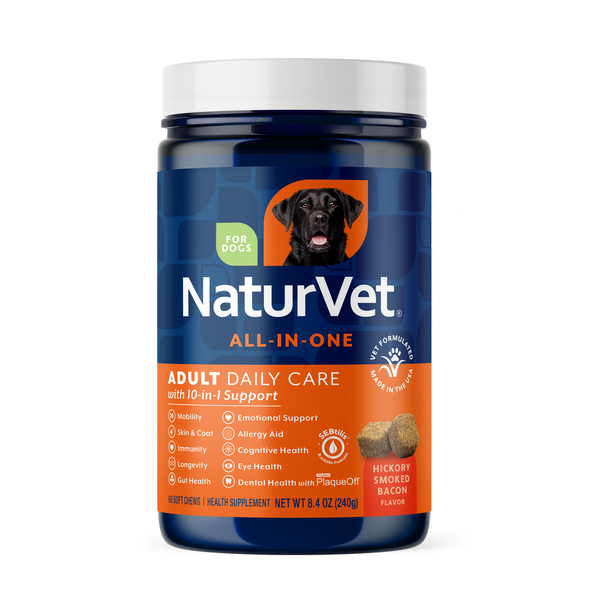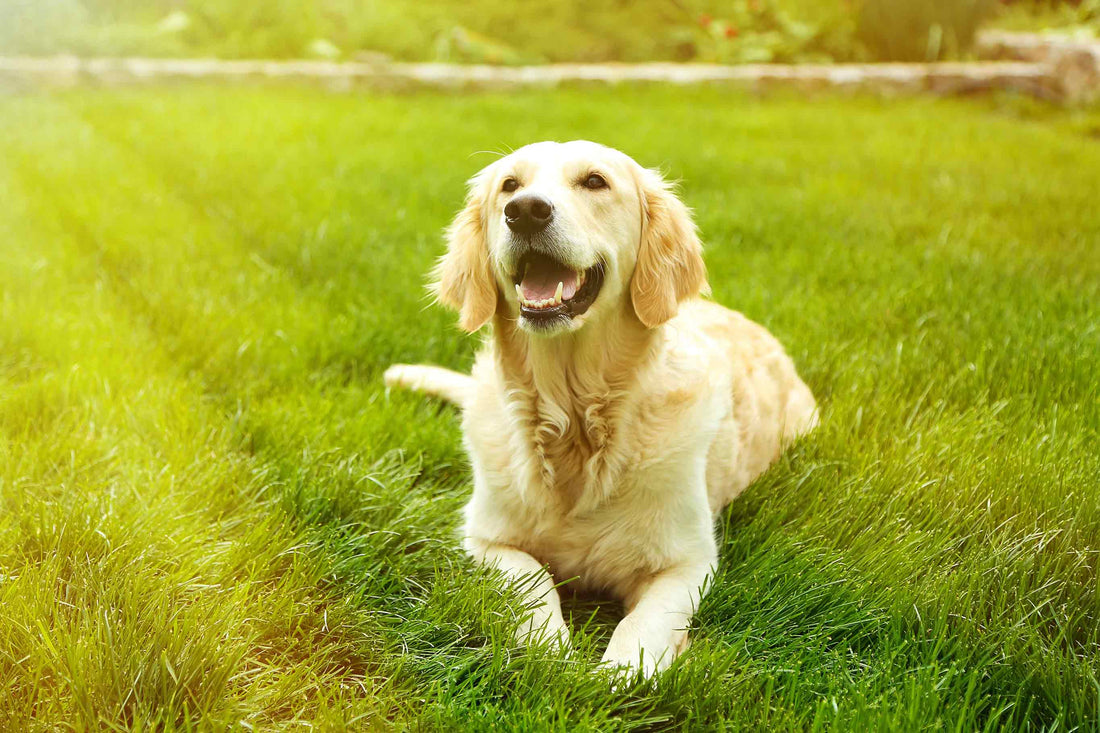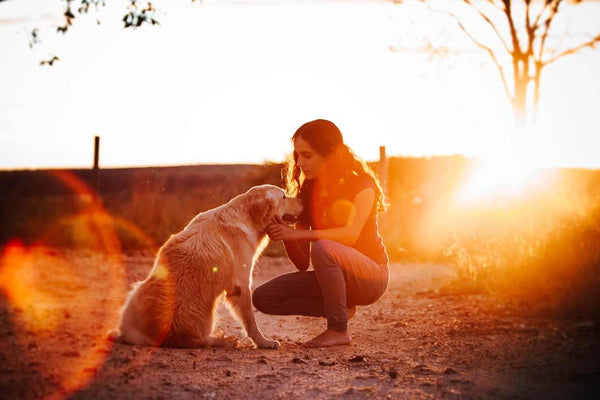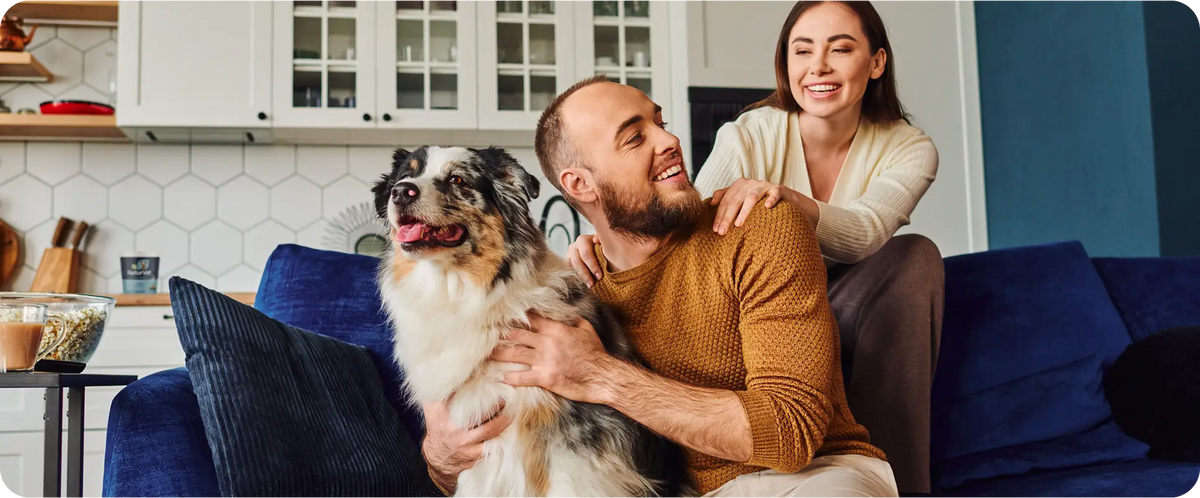Preventative Care for Dogs: 5 Tips for Parents
I love dogs. But what I love most about them is seeing them in their element: happy, healthy, playing, and enjoying time with their human companions.But keeping them in this state isn’t always easy and requires some know how. Preventative care for dogs involves many things: good education, compassion, awareness, and a healthy dose of precaution. Whether you’re new to pup parenthood or just looking for a refresher for some main points, this article has something for you.
Following are five big categories for preventive care to consider that can help keep your dog happy at home and out of the office (which believe it or not, this vet would prefer!)
Keep your dog at a lean body condition
According to the Association for Pet Obesity Prevention’s 2017 statistics, 57% of dogs in America are overweight or obese. In my experience in practice, many dogs develop weight problems at an early age. Having excess fat deposition can be pro-inflammatory, putting pets at risk for disease and the extra weight puts a strain on their joints, especially their hips.
How do you know if your dog is overweight? The basic place to start is by looking at the area just behind her ribs. From the top, there should be a gentle dip inwards from the last rib to the hips. When looking at her from the side, her belly should slope gently upwards from the last rib to the groin. If your dog loses this “Coke bottle” shape, appears very flat from the last rib back and has no belly tuck at all, she is crossing the line to being overweight.
Why are so many dogs overweight? The most likely reason is the most simple: food. Many folks equate feeding their dog to feeding affection. However, the reality is that many dogs, as intelligent as they are, learn to beg because they know they can get more food with enough practice. While extra food makes for short term happiness, the additional weight gain in the long run causes more harm than refusing that extra half cup of food or leftovers from dinner.
Does this mean you can’t give your pup treats? Of course you can! With help from your vet, you can determine how much food per day is appropriate for your dog, and use a small portion of that amount for treat allowance. If you want to get a separate treat for your dog, make sure it amounts to no more than 5-10% of his daily diet.

Feed a high quality diet
As a veterinarian, discussions about diet are almost as common as discussions about weight. There are so many diet choices out there and about twice as many opinions about what is best to feed.
Essentially, the most important thing is to feed your pooch a well-balanced diet. Commercial diets are formulated to be well-balanced, but not all of them are created equal. Generally, I tell folks to look for diets with meat as a first ingredient and to look at a company’s recall history. The Association of American Feed Control Officials (AAFCO) establishes protocols for feeding trials, which help support quality and safety. Diets that meet these standards will have the AAFCO statement printed on the packaging.
Store Bought or Home Made?
Are home-cooked diets okay? They are, but you do have to be careful. It’s very easy to misformulate a diet and either leave out nutrients, or include them in the wrong proportions. If you want to cook for your dog, it’s best to consult with a veterinary nutritionist, who can develop several diet options and ensure they are balanced appropriately.
Grain-free and raw diets are popular nowadays and also evoke many questions at the office. From a strictly medical perspective, there is limited data to support either type of diet. It is true that dogs can have a wheat gluten allergy, similar to people with Celiac’s disease, but other proteins like chicken and beef are more often an underlying food allergy cause.
Raw diets sound appealing and evoke images of your dog bounding through a snowy forest in search of prey, but preparing and feeding raw food constitutes a public health risk to dog owners that leads many veterinarians to discourage their use.
Supplements are also very popular but as there are many types and manufacturers out there, look for the National Animal Supplement Council seal. The NASC has stringent labeling guidelines and subjects member companies to random product testing to ensure quality. But before starting even good quality supplements, speak to your veterinarian first. Many diets already have nutrients in appropriate amounts that should not be over-supplemented, (like Calcium for growing puppies). Thus, supplementing is not appropriate in every case but several conditions, like allergic dermatitis, arthritis, chronic digestive issues, anxiety, and sleep disorders, may benefit from supplementation.
Focus on Training Early
Your dog’s mental health and well-being can be just as important as his physical health! I see many dogs in practice that suffer from behavioral abnormalities ranging from mild thunderstorm anxiety to separation anxiety to severe generalized anxiety and fear.
Contrary to popular belief, many dogs that exhibit fear may not have suffered from physical abuse but a lack of socialization and resultant fear from the unknown. I always tell folks with puppies to make sure to socialize them not just with people and other dogs, but any other animal species (i.e. horses or other farm animals) and with any environment you’d expect them to be in regularly.
Preventative care for dogs starts early! By six months of age, many behaviors can be “locked in”. This doesn’t mean a dog can’t be trained out of them, but it does get harder with age. Your veterinarian can provide some basic guidelines to help with training and behavior, but employing the skills of a great in-home trainer or veterinary behaviorist can be very beneficial. What’s the difference? I equate a trainer to a human psychologist, as they focus predominantly on behavior modification. A veterinary behaviorist is a veterinarian specializing in behavior who can combine behavioral modification techniques with appropriate medical therapy. Your vet should have some suggestions for qualified local trainers and behaviorists in your area.
Lastly, make sure that everyone in the home is on board with any training that’s taking place. Being consistent with training is the only way for it to take hold. If any family members, especially children, are not following the plan, this can lead to confusion on the part of your pup and set back your success.
Keep a Close Eye Indoors and Out
Environment, both indoors and out, has a huge part to play in your dog’s health. Therefore, it should play a part in preventative care for dogs as well.
Getting back to a balanced diet, think about what kind of food may be left out or within your dog’s reach (which can be further than you might think!). Foods like chocolate, raisins, onions, garlic, and those high in fat (like fried chicken or leftover grease) can cause severe disease in dogs and shouldn’t be anywhere they can get to. Similarly, find a trash can with a lid that can be locked to avoid any “accidental” scrounges for leftovers.
Monitor Allergens Indoors & Out
As we all know during heavy pollen season, we have little control over allergies in the great outdoors. But your home can be a source of allergens as well. Excess dust, mold, and chemical residues either on new products or recently cleaned ones can lead to respiratory concerns and skin irritation. Consider using detergents without additional fragrances and make sure any cleaning services are using pet-friendly products.
Although we can’t control outdoor allergens, there are other environmental aspects to consider. This includes other dogs, wildlife, and likelihood for infectious organisms and parasites.
Practice Outdoor Pet Safety
Heavily wooded areas can harbor high numbers of ticks as well as wildlife, like deer and rodents, for them to infest. According to IDEXX, a leading diagnostic company that has been collecting data on canine Lyme disease for several years, 25x more dog cases of Lyme disease are reported compared to human cases by the Centers for Disease Control. Your dog’s closer proximity to the ground and propensity to go exploring make it more likely he’ll pick one up. With Lyme disease incidence continuing to expand south and west across the US and new tick-borne diseases being described every couple of years, utilizing tick preventatives is more important than ever.
Puddles of standing water, streams, and ponds house water-borne intestinal parasites, like giardia, as well as water borne bacteria, like leptosporosis. These are spread through the urine of infected wildlife. Avoiding these areas or at least keeping your pooch from drinking from any of these water sources can be very important for prevention. Standing water is also a breeding ground for mosquitoes, which carry deadly heartworm disease. Eliminate any standing water sources on your property and ensure your dog is on year-round heartworm preventative.
Be Aware of Your Surroundings
Social environments play a large role in what you expose your dog to. It’s important to socialize but focus on supervised play dates and time spent with familiar dogs. While dog parks evoke a pleasant thought of pups frolicking together over green pastures, the reality can be very different. Putting several dogs together who are unfamiliar with each other can lead to displays of dominance (or submission), competition, and aggression over toys or food.
Besides being a common source of accidental bite wounds, I also suspect many dogs that develop gastrointestinal parasite infections, like giardia, to have acquired them from dog parks. If you do go to a dog park, always bring a fresh bowl of water with you and never let your pup drink from a communal water source. And as a favor to all, pick up after your pup!
Develop a Relationship with a trusted veterinarian
You know your dog. He is after all, a family member. However, a veterinarian knows “dogs” and sees many of them every day, so having a good working relationship with a dog doc is very important. While there are limitless articles you can read and advice you can obtain online about canine health, their sources can be questionable or may not provide the appropriate context for your pup.
Just like you should see a physician on a regular basis to safeguard your own health, your dog should see a vet on at least an annual basis. Develop a comfort level with a vet that is willing to fully discuss your concerns and to help you understand any abnormalities or illnesses. This includes discussing vaccinations most appropriate to your region and level of risk, annual diagnostic testing, preventative medications, and diet. If finances are a concern (and for most folks they are to some degree) also make sure your vet practice is willing to make and discuss estimates with you so that you can have some idea of what to expect.
Be Proactive and Open-Minded
Lastly, animals and medicine can both be unpredictable. Keeping an open mind and staying flexible is important for maintaining appropriate expectations. Develop a relationship with a vet who is comfortable discussing all aspects of care with you. This includes if a plan for treatment needs adjustment. Or, if a medical condition becomes complicated and referral to a specialist is appropriate. Many vets have working relationships with specialist doctors in their area and will remain a part of your dog’s care even if referral is needed.
It’s true, your vet may find something you were unaware of, like a skin growth or fractured tooth, at an annual visit. And it’s true this can translate into an unexpected cost. But that’s why it’s important to build a relationship with a vet. One know cares about your dog and your relationship with your pup. A good vet will always make time to discuss/demonstrate exam findings thoroughly with you. They'll explain why they’re important to address, and provide a couple of options for how to proceed, including possible costs. After all, catching things early often results in less discomfort for your dog and lower expense for you.
An Ounce is Worth a Pound
Hopefully, these tips have provided some new things for you to implement in your dog’s life, or has at least provided a refresher. As they say, an ounce of prevention is worth a pound of cure.
But while the tips above have included a lot of precautions to keep in mind for how to practice preventative care for dogs, don’t forget to enjoy them! Remember, you can’t control everything. Sometimes we have to take a step back and just enjoy time with our furry friends. This is at the forefront of the human-animal bond.
JOIN OUR PACK
Follow us @NaturVet on social media to fill us in on any tips we might have missed. And, check out the rest of NaturVet.com. We’ll keep you up to date on all our latest pet resources, supplements, tips and tricks, and more – everything you need to be the best pet parent possible.

























